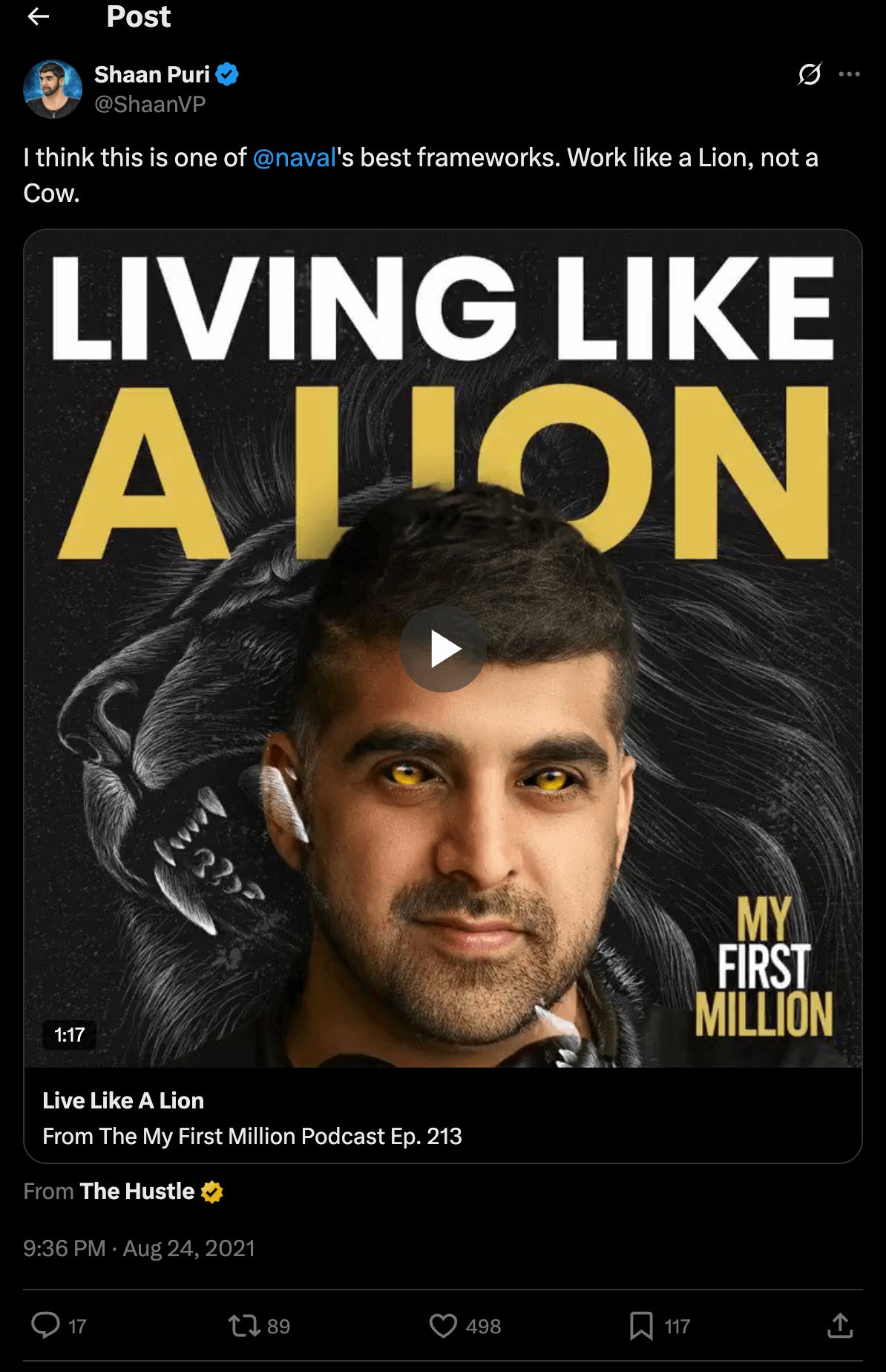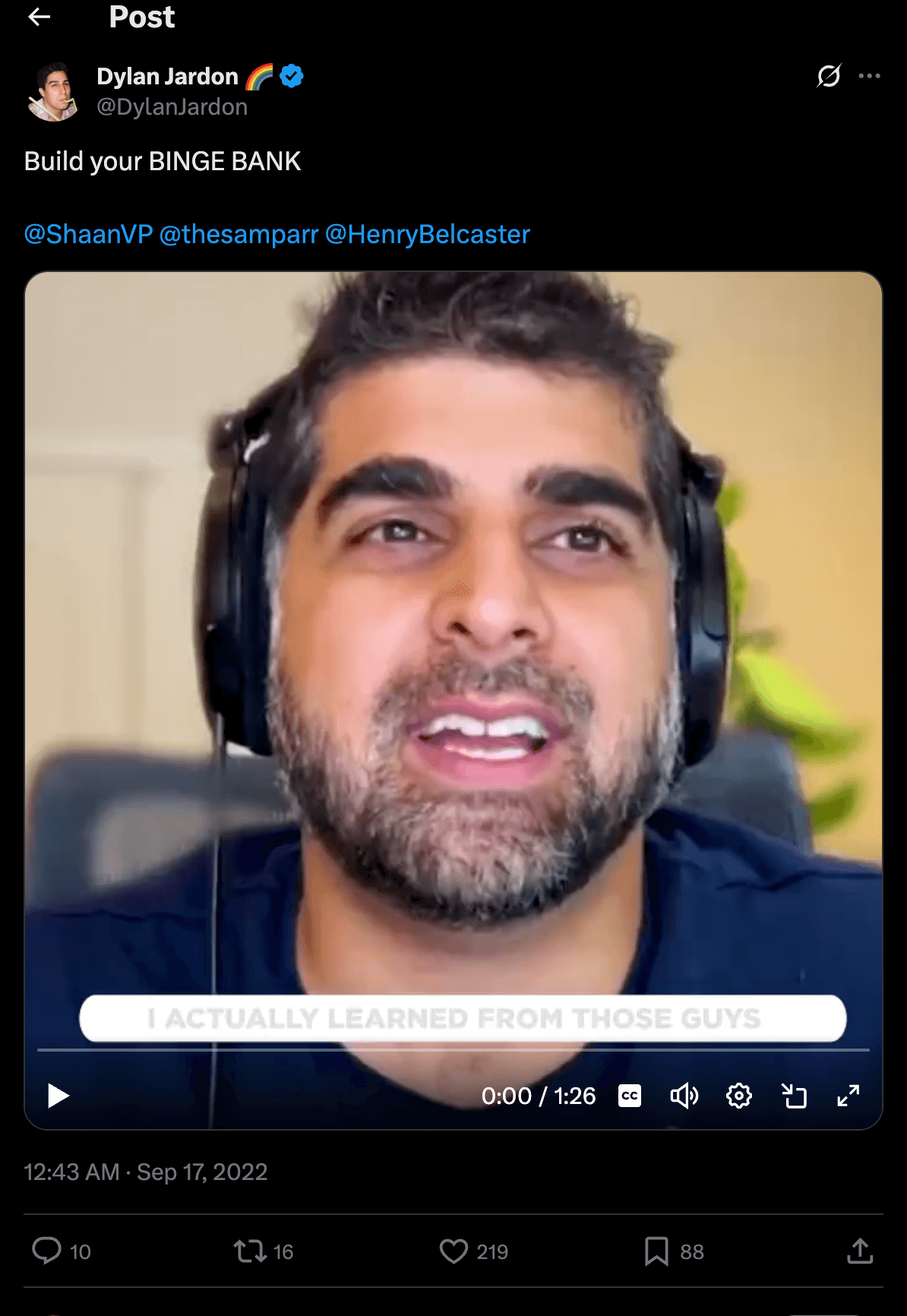- Startup Spells 🪄
- Posts
- Squatter Marketing: How Dylan Jardon and Henry Belcaster Built SmartNonsense to $1M+ Without Permission
Squatter Marketing: How Dylan Jardon and Henry Belcaster Built SmartNonsense to $1M+ Without Permission
PLUS: Claude + Tinder = 10 Dates in a Week
Squatter Marketing: How Dylan Jardon and Henry Belcaster Built SmartNonsense to $1M+ Without Permission
Dylan Jardon and Henry Belcaster didn’t pitch their way into success—they published their way in.
With no formal outreach, they built SmartNonsense into a $1M+ agency by creating content for influential creators without being asked.
This approach, which they called Squatter Marketing, turned unsolicited work into high-visibility assets that hijacked attention and landed paying clients.
Make High-Value Videos First, Let the Audience Do the Rest
In the beginning, they didn’t ask creators for permission. They made videos for people like Shaan Puri, Naval Ravikant, and the My First Million podcast—then posted the clips online and tagged the creators. These were polished, bite-sized edits optimized for social media.
One early breakout featured Shaan discussing Naval’s “Work like a Lion, not a Cow” framework.

Shaan Puri - "Work Like A Lion, not a Cow" Framework
That clip went viral, got shared by Shaan, and quickly led to inbound client interest from his audience. It wasn’t a one-off. Jardon and Belcaster kept doing this with more creators, and each video became a magnet for attention.

Build your BINGE BANK
Even when the original creator didn’t respond, the audience did. Followers, fans, and peers who saw the content would reach out—often with interest, budgets, and problems SmartNonsense was already solving.
The strategy worked because it skipped permission, skipped sales, and proved value upfront. The content itself did the heavy lifting.
Each unsolicited video was a Trojan Horse. It wasn’t just made for the creator—it was built to ride their distribution. And if that creator reposted the clip, it created a compounding effect: new eyeballs, new credibility, and often, new clients.
It also acted as a live portfolio. Instead of promising what they could do, they showed it—using the creator’s own brand, voice, and message. The videos functioned as real-world demos and proof-of-work in one.
To scale it, they built what they called a Binge Bank—a library of clips showcasing their editing style and creative voice. The more videos people saw, the more they trusted the work. No ads. No sales calls. Just visible, bingeable, high-quality output.
The result was a waitlisted agency built entirely on inbound demand—sparked by value, not outreach.
Squatter Marketing Works Because It Hijacks Trust and Leverage
Psychologically, Squatter Marketing triggers multiple trust levers:
Reciprocity: You gave something first—high-effort, high-value work—so creators feel pressure to respond.
Social Proof: When big names share your videos, others assume you’re legit.
Commitment Bias: Once someone shares your work, they’ve subtly endorsed you.
Momentum Bias: There’s no friction—just an easy yes to keep working with someone already adding value.
SmartNonsense didn’t steal attention. They earned it—by proving, visibly, that they were the best at what they did.
The strategy was simple: pick your targets, do the work first, publish it publicly, and let your results become your sales funnel. Squatter Marketing turns borrowed distribution into long-term demand.
Top Tweets of the day
1/
day 51 of growing a startup from $650k to $1m arr
“it would’ve been better if you sold your app”
and a year later I have a business that grew 50% y/y and is almost back to its all-time high
but ofc it would’ve been better if I had sold it...
for the person who would’ve bought— Ivan Sparrow (@ivesparrowai)
6:30 AM • Jul 15, 2025
One thing about apps and SaaS is once you make it, you don't have to work on it to make money. With agency, you need to work to make money.
Code and media are entirely another level of leverage. The star cast of FRIENDS still prints money. Just like this guy's app which does exactly the same thing as ChatGPT.
2/
🥷 Just found a gray hat technique for high converting viral videos - nearly missed it
(dunno if I should share lol)
I was chilling on kalodata as I do every week, and saw...
One of the TOP EARNER was only reposting other top selling videos?!
How tf did he bypass TT policy?
— Yannis (@cyannnis)
3:56 PM • May 6, 2025
Mind-blowing insight.
3/
If you're building anything with AI, set up a tool like Helicone.
Just installed it, and now I can see:
— Which users are costing me the most money
— Cost breakdown by prompt, org, model, price
— Which models are the most used
— Error rates, etc etc— Wilson Wilson (@euboid)
11:56 AM • Jul 21, 2025
All the big AI companies have power users. This tool allows you to spot them so you can rate-limit just them. Very few people abuse the system.
Turns out, every single AI tool I use face the same limitation of GPUs.
Rabbit Holes
Shenzhen: The Silicon Valley of Hardware (Full Documentary) | Future Cities by WIRED
A Powerful Secret Weapon for Your Paid Media by Seth La Tour
Claude + Tinder = 10 Dates in a Week by /r/ClaudeCode
What’d ya think of today’s newsletter? Hit ‘reply’ and let me know.
Do me a favor and share it in your company's Slack #marketing channel.
First time? Subscribe.
Follow me on X.
Reply